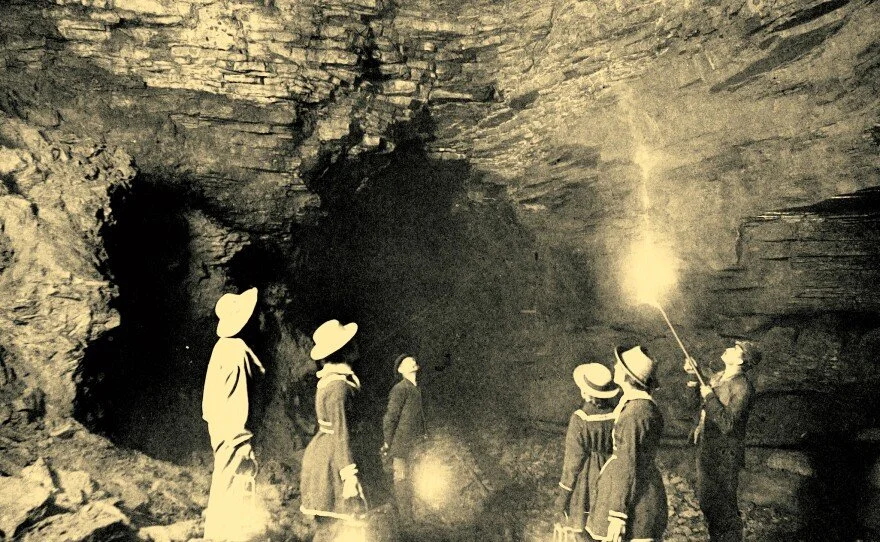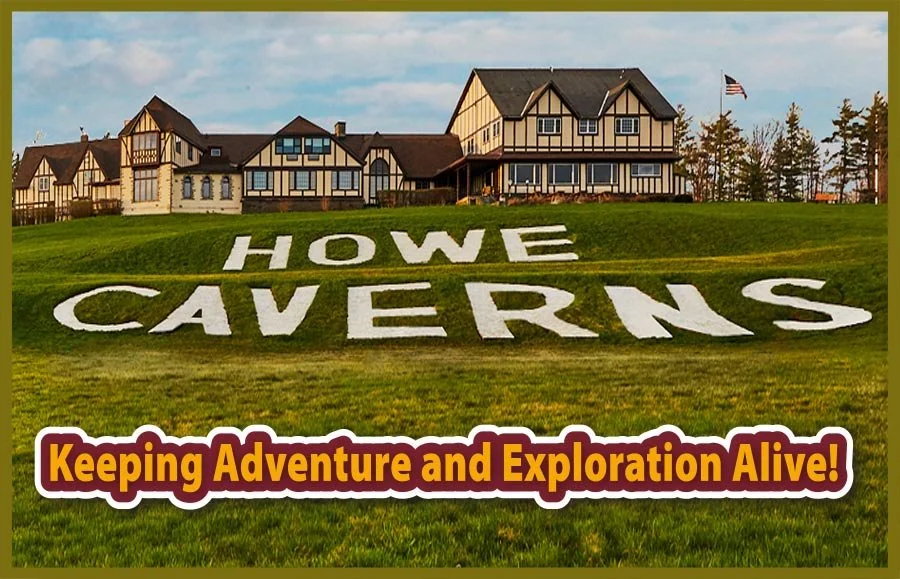The Cave of Great Galleries Gutted
Cobleskill, New York
The wide underground wonder,
cavernous over inked water,
secret, yet marked by a rumored-about
blowing rock, was found out by Howe
when Millicent the cow lingered near the cool
hidden mouth of the Cave of Great Galleries
one stifling afternoon, pleased to stand still
in the chill of freed breezes having wound
their torturous circuit up through
the labyrinth of New York’s long becoming.
The siren song of an echoing drip-drip
wooed explorers further down-step-down
toward mysteries waiting in the karstic
dark beyond the Lake of Venus,
a troglobite-guarded dangerous trek
with the poor-patch light from whale oil lamps
swallowed up in the pitch-black maze
of tunnels damp in their musty wet
where blinking eyes set back in shadows
looked out on the bold frontier
of a brand new world buried in the old.
Older still run the veins of greed that can
undermine wonder for the money in the mud.
The clamor for limestone, for all it could ground—
now that the wheat fields had fled far west—
fueled the rock quarries filling the vacuum.
Fragile caverns without tourist traffic
were easy pickings to scoop up more profits;
a ready-made mine for the mineral extractors;
convenient space for machines to maneuver in;
a clear head start over other surface diggers
clogged in layers Howe’s waters had conquered.
Rock masterpieces million-year slow-etched were
wrecked into piles for the ravenous market,
stalagmites, stalactites snapped into rubble,
erasure of flowstone, the crystals of moonmilk,
chandeliers, draperies: luminous treasures
having just come to light were as quickly eclipsed,
plundered at Ramsey’s inimical pleasure,
draining the numinous back to the abyss.
NOTES:
The following historical excerpts are taken from The Remarkable Howe Caverns Story by Dana Cudmore, The Overlook Press, Woodstock, NY, Copyright 1990 and can be found on the Howe Caverns official website at https://howecaverns.com/history
Prior to the arrival of the German Palatine Settlers in the Schoharie Valley in the early 1700s, the local Native Americans knew what they called “Otsgaragee” or “Cave of the Great Galleries.” In historical records, there is some disagreement as to this translation, which suggests the Native Americans explored deep into the cavern. A second translation is “Great Valley Cave,” which may be more accurate, as many believe the Native Americans’ superstitions may have kept them from exploring the cave.
Little was known or remembered of Otsgaragee by the early 1800’s when Lester Howe, his wife Lucinda, and their three infant children – Huldah Ann, Harriet Elgiva and Halsey John – settled in the valley east of Cobleskill. The location of the cave entrance had been lost to history, but there was talk of a mysterious “Blowing Rock” – a strange rocky ledge from which a cool breeze of air emanated on even the hottest days.
There are several different accounts of the caverns’ history, but the most often told (shortened for the touring public) is that Howe found the cave by accident on the 22nd of May, 1842. On many hot summer days he noticed his cows pastured in this same spot, not on his land, but land owned by neighbor and friend, Henry Wetsel. When Howe approached his herd, he began to notice the temperature getting cooler. His dairy herd had gathered near the cave’s hidden entrance to feel the cool air coming from below, and Howe had indeed found the mysterious “Blowing Rock” and gave credit, in particular, to a cow named “Millicent” for helping with the discovery. Howe then entered the cave with his neighbor Henry Wetsel.
Howe opened the cave to eight-hour public tours in 1843, and, as business grew, a hotel was built over the entrance. The caves soon became an international sensation which equaled Niagara Falls as a New York State travel destination. When the Albany and Susquehanna Railroad ran their track through the town in 1864 a station was opened there and a small community grew around it.
When Howe encountered financial difficulties, he sold off parts of his property. Howe eventually lost his property to local businessman Joseph Ramsey. A half dozen stone quarries operated in the town of Cobleskill in the late nineteenth century. One of them, less than a mile west of Howe’s Cavern, alone employed 400 men. When tourism fell off late in the century Ramsey turned to rock quarrying and destroyed much of the lower cavern in the process. What remained of the cave was saved when the property was sold. Howe Caverns reopened to the public in 1929. Secret Caverns opened nearby that same year.

